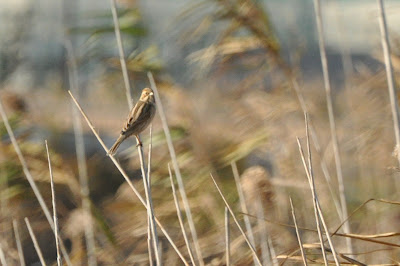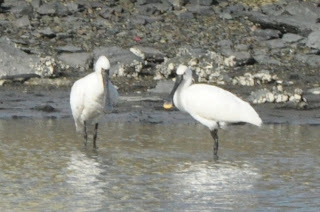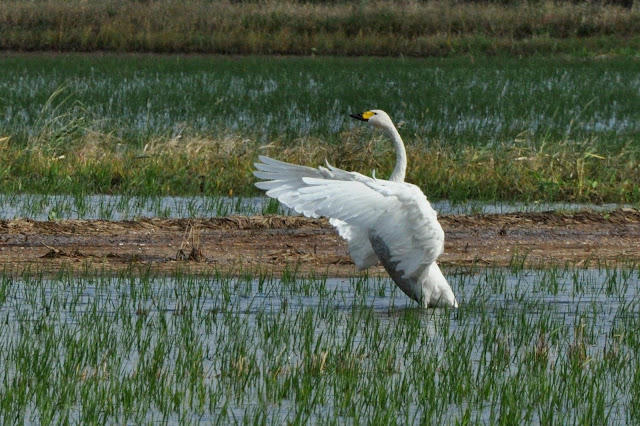When Junko phoned to tell that somebody had seen a rare bird, I went to pick her up and we drove to the area west of Fukuoka city. The weather had been bad with lots of rain, but right then it cleared a bit and though the cloud cover was dark grey, there was a little soft light coming through. We scanned the river, the mudflats and the fields of Imazu. Stopped to look at an Osprey in a tree, a White Wagtail eating “something with legs”, Greenshanks in green grass and a Common Kingfisher on the side of a canal, matching colors with the water pipes.
ミサゴ、Osprey
アオアシシギ、Common Greenshank
ハクセキレイ、White Wagtail
カワセミ、Common Kingfisher
Then we drove to fields at Taremaro. They showed a whole lot of nothing. Where was this bird?
Junko called it a ko-hakucho. Hakucho means swan and ko usually stands for small so I pictured a not too big swan, but not too small either so where could it be hiding – in the grass? The sprouted rice plants? The soybeans? We figured it had to be across the river, in the paddies behind the factories. We went over there and the moment we rounded the corner of the first factory building we came to a dead stop and our mouths dropped in ashtonishment. The old ricefields were flooded from the rain and on every square foot was a duck. Ducks were everywhere! Hundreds, thousands of ducks. They were circling above us, too. Landing and taking off in formation. What a sight!


We debated how to proceed and decided to back-up and take another access road with more favorable light conditions. I took a few quick shots, counting on more in about 5 mins. But… we got distracted by this cute little Sandplover and the 5 mins became 15 and when we got back to the fields… they were empty! We looked at each other as if we’d had a dream and weren’t sure what was real. Nothing to see. No ducks anywhere and certainly no little swan.
イソシギ、Common Sandpiper


The next day, on Sunday I went back. Guess what? In the middle of the plain that held thousands of ducks the previous day was now a very white, very conspicious huge bunch of feathers fluttering in one of the flooded paddyfield: the swan. Not a small one, but a rather big, impressive Tundra Swan, showing off his (her?) wingspan of over 2 meter. And not one duck. Where was he (she?) yesterday? And were had the ducks gone?
A friend had some explanation: The duck-hunting season started this weekend. I hadn’t seen or heard anything about it, but it was most likely in the newspaper and I still cannot read well. However, the ducks can apparantly.
コハクチョウ、Tundra Swan
A lot of English today.
I will write the Japanese version later, when I have a holiday of some kind. It will probably take me a whole weekJ






























